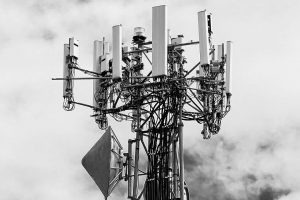THE SALE of inactive tower assets by mobile network operators (MNOs) will result in more carrier-neutral cell towers and lower costs to consumers, said advocacy coalition Better Internet PH.
Mary Grace Mirandilla-Santos, the lead advocate for Better Internet PH, said the divestment by MNOs of these assets “is something that’s happening globally.”
“If we are to look at what’s happening in other countries, the practice is that the MNOs will now focus on active infrastructure,” she said in a chance interview.
Ms. Mirandilla-Santos said the move lets MNOs be more concerned about the quality of services, the speed, or coverage.
“Then, the tower assets will now be managed and operated by an independent power entity,” she said, describing the move as a “global best practice.”
She said under an independent entity, the business model will be different because tower companies will be more profitable if there are multiple operators attaching their equipment.
“Ideally, this will result in more competition. So, in a location, you can have multiple operators coming in because there’s a tower already there. This practice will ideally result in more competition, thereby better services and lower costs,” she added.
Carrier-neutral towers allow multiple MNOs to share the tower and serve the communities.
“Because the asset is shared, it’s supposed to lower the cost for the operators. Therefore, we should expect lower costs to be passed on to the consumers,” she said.
Ms. Mirandilla-Santos said these benefits are the reason why the group is pushing for the passage of the Open Access bill that will institutionalize the Department of Information and Communications Technology’s (DICT) Common Tower Policy.
She said the Open Access bill has a provision where passive infrastructure, including towers, poles, and underground ducts, can be shared by multiple broadband operators.
The common use of telecommunications infrastructure aside from towers will push for business and economic activities through the deployment of fiber broadband.
“And to do that, you need to make sure that it’s easier and more affordable to deploy fiber broadband cables in those communities,” she said.
“So, if you have shared underground, where different fiber broadband operators can actually put in their fiber inside those ducts, sharing the cost, sharing also the right of way, then we can expect that it’s not only more efficient, and more affordable, it will also lessen the disruption to the communities,” she added.
Ms. Mirandilla-Santos said the Open Access bill will provide a policy framework that the DICT and the National Telecommunications Commission can use to put out guidelines for sharing passive infrastructure. — Justine Irish D. Tabile






